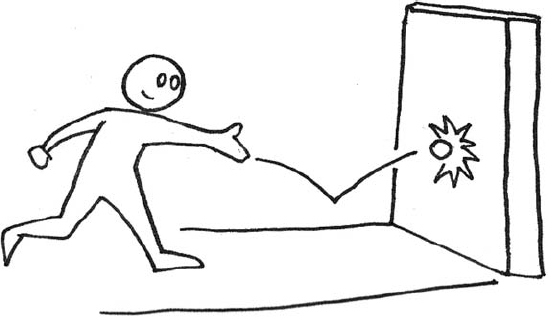Chapter 1. WELCOME, N00BS!
This chapter is written especially for people who are new to video games and how they are made. If you are not a n00b[7], then feel free to skip it. However you are going to be missing out on a lot of great stuff. Don't say I didn't warn you.
Within the academic gaming community, there are many different definitions for what qualifies as a game. Some scholars insist that "a game needs to be a closed formal system that subjectively represents a subset of reality[8]." Others say that games need to have "players in conflict with each other[9]." I think those definitions are trying too hard to sound smart.
Games, while complex, are often simpler than that. Bernard Suits[10] wrote that "playing a game is a voluntary effort to overcome unnecessary obstacles." This is a pretty amusing definition, but still a bit too scholarly for my taste. Let's keep things simple. Let's consider hand ball. You only need one player for hand ball—where's the other players to be in conflict with? Bouncing a ball against a wall without missing it is hardly a metaphor for reality; unless you lead a very boring life. Let's face it, sometimes a ball bouncing against a wall is just a ball bouncing against a wall.

Playing hand ball may therefore seem like a time-waster, but a time-waster becomes a game when you add rules and an objective. A rule may be to throw the ball with your right hand ...
Get Level Up!: The Guide to Great Video Game Design now with the O’Reilly learning platform.
O’Reilly members experience books, live events, courses curated by job role, and more from O’Reilly and nearly 200 top publishers.

